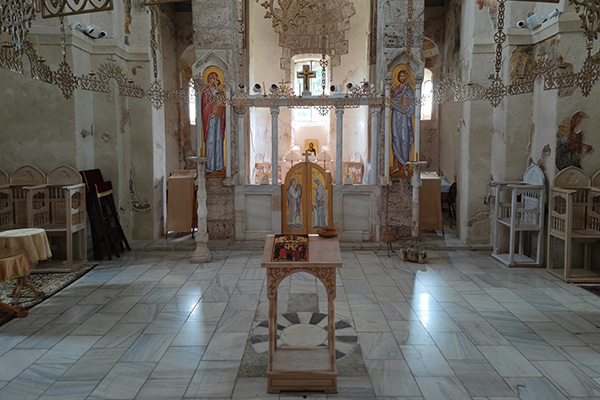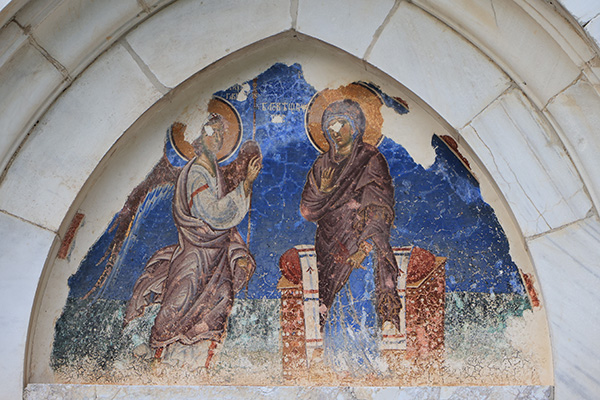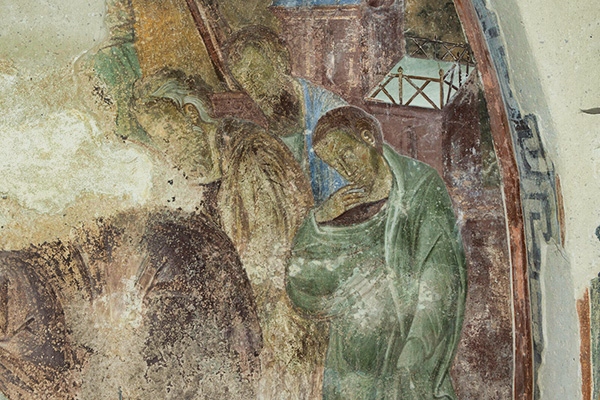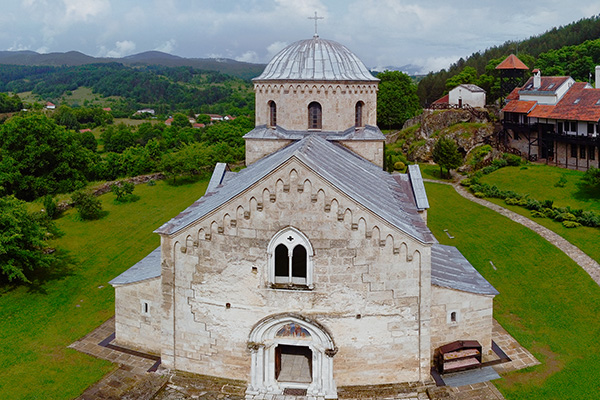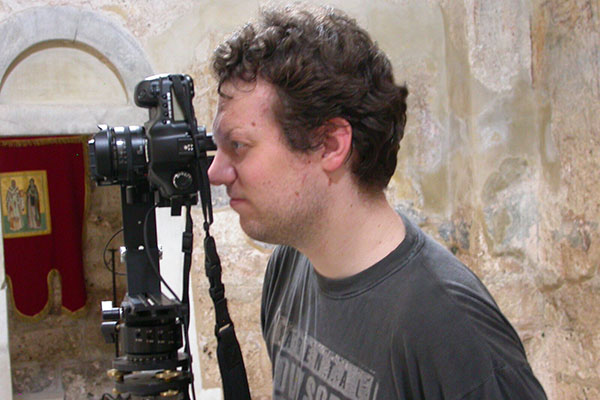The Monastery of Gradac is situated on a plateau above the river of the same name, on the slopes of Golija mountain, some 20 km northwest of the city of Raška and 12 km from the town of Brvenik. It enjoyed good connectivity with the other centers of the Serbian state during the Middle Ages, as it was close to the old town of Ras and the road to Arilje and Studenica. In the Early Christian period, there used to be a single-aisled church on the monastery grounds, in immediate proximity to the later medieval katholikon.
Construction of the monastery has generally been set within the last quarter of the thirteenth century. Archbishop Danilo II (c. 1270- 1337) provides us with the most information in the book “Life of Queen Helen.” He praises the queen’s efforts in building the church, saying that she gathered the best masons, endowed the monastery with villages and lands, and donated books, silver and gold vessels, icons, gold-embroidered curtains, and relics to the church. Queen Helen, the wife of King Uroš I (1243-1276), and the mother of kings Dragutin (1276-1282) and Milutin (1282-1321), has mostly been associated with the name of Anjou, although there are different hypotheses in historiography concerning her ancestry. It is well-known that she maintained connections with some of the ruling houses and church dignitaries in Western Europe.
Western ties are also noticeable in the architecture of her endowment- the Church of the Annunciation of the monastery of Gradac. A number of decorative elements are modeled upon the contemporary architecture of the Gothic style, such as buttresses on the east side of the facade, pointed arches on the archivolts of the portals and large windows, blind arcades underneath the cornice, as well as the decoration of capitals and rosettes in window lunettes.
The church was built from carved limestone-tufa, and its exterior was riveted with light polished plaster. While architectural decoration is made from the same material, windows, and portals are made of white marble.
With its structure and spatial organization, the church of Gradac continues the tradition of the Raška school of architecture, with the inclusion of some of the features present on grand monuments such as Studenica and Žiča. It is a single-aisled building with a narthex and side chapels on the western side, a narrow west bay and a dome above the central space, chancels on the north and south sides, and a tripartite sanctuary on the east. A segmented dome with a drum that is eight-sided, both inside and outside, is a peculiarity of the Gradac church. Other parts of the nave are covered with barrel vaults, while the narthex is covered with ribbed vaults. The sanctuary is the same width as the nave and is formed by three sections, each with its own apse of the same height, which is also a novelty in the building practices of the churches of the Raška school.
In the interior of the Virgin’s church of Gradac, the white marble was used for carved furnishing, such as the altar screen, but also for two sarcophagi in the west bay of the nave. The identity of the individual buried underneath the smaller sarcophagus on the north side has not been determined, while on the south side is a dual tomb that was most likely intended for the royal couple. In 1314, Queen Helen was buried there, while the remains of King Uroš were entombed in his foundation, the monastery of Sopoćani. Above the tomb on the south wall of the Gradac church, a founder's composition is painted. It shows the Virgin leading a procession toward the Christ enthroned, which includes Stephen the First-Crowned, King Uroš, and Queen Helen holding the model of the church.
Mural painting of the Gradac katholikon has deteriorated to a great extent since, during the course of its history, it was without a roof and vaulted ceilings for an extended period. Still, preserved fragments testify to the high quality of the wall painting in Gradac. In the drum of the dome, between the window openings, are coupled figures of prophets, while the evangelists were painted in the pendentives. Scenes from the cycle of Great Feasts filled the upper sections of the nave walls, with the Crucifixion, Dormition of the Virgin, and Nativity of Christ remaining. Parts of some of the compositions are preserved in the National Museum of Serbia. In the sanctuary, the Communion of the Apostles and the Liturgy of the archpriests were painted. In the conches of ancillary apses, busts of the Virgin and dead Christ are depicted, as a part of the Lamentation scene, painted here for the first time. In the narthex, scenes from the Life of the Virgin are painted in the second zone. The Annunciation, to which the church was dedicated, was painted as the largest and most representative scene of the cycle, flanking the portal. Presently, only the wing of the archangel and part of the Virgin’s nimbus remain. In the south chapel, dedicated to Stefan Nemanja, frescoes depicted the life of the founder of the Nemanjić dynasty, from the time he left for Mount Athos until his death and the translation of his remains to Studenica.
Painting is also preserved in the small Church of Saint Nicholas, built on a rock on the southeast side of the courtyard. Even though the frescoes were most likely made in the fourteenth century, it has been assumed that the church was built before the katholikon was completed for the purpose of the liturgical services during construction. It may have been intended for the masters of the Catholic denomination who participated in the building of Gradac, and it has been hypothesized that it served as a sort of court chapel for Queen Helen since the stairs adjoined it to the south dormitory that may have been the place of queen’s chambers.
The remaining buildings, such as the refectory, have been damaged, in great part, due to the unfavorable characteristics of the terrain. Underground waters and surrounding hills contributed to torrents that destroyed most of the material remains on the monastery grounds. In 1984, the work on the monastery's exploration, conservation, and restoration was started, lasting for the next thirteen years. Since the 1980s, the monastery has been active again and inhabited by female monastics.
